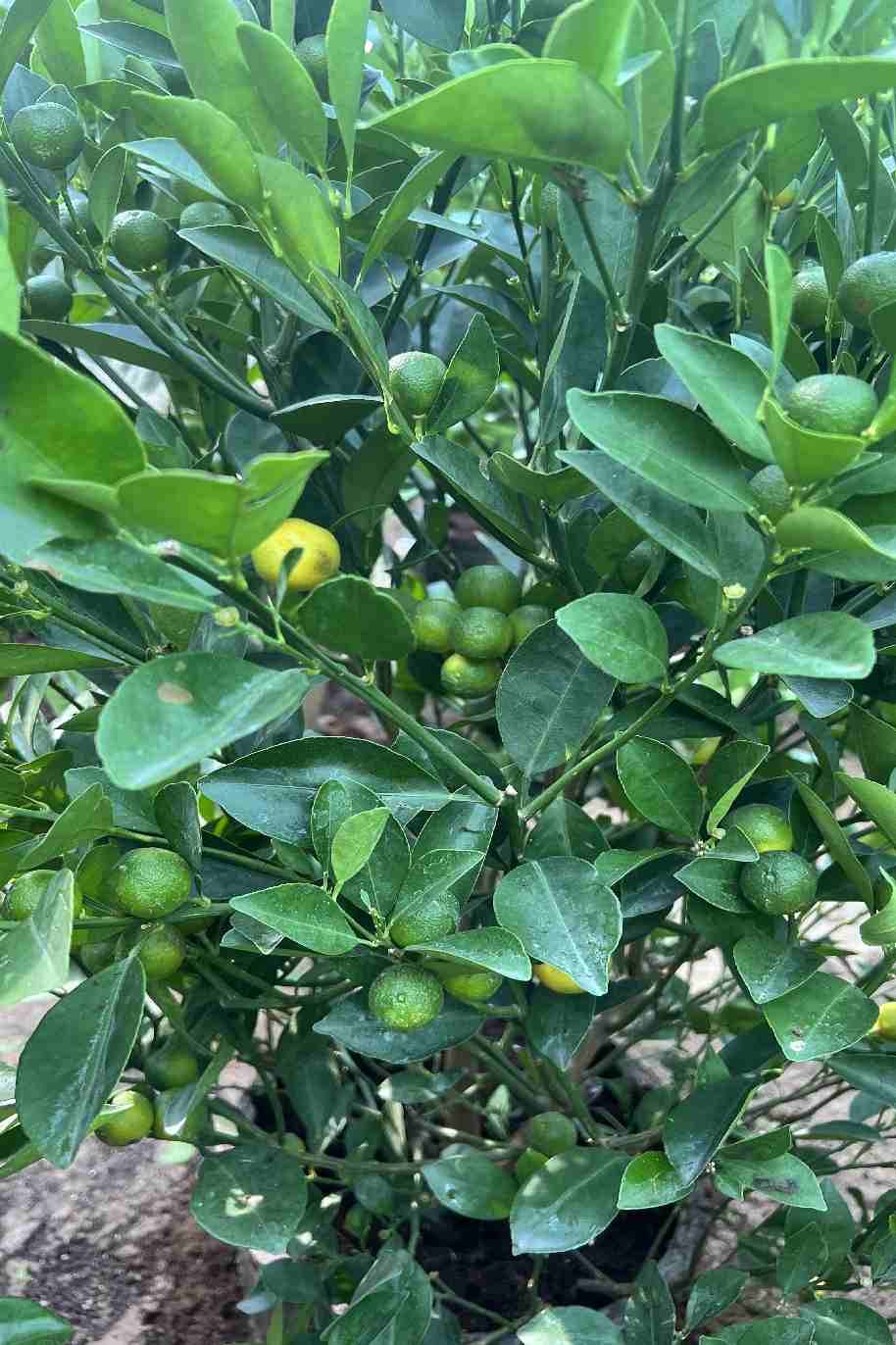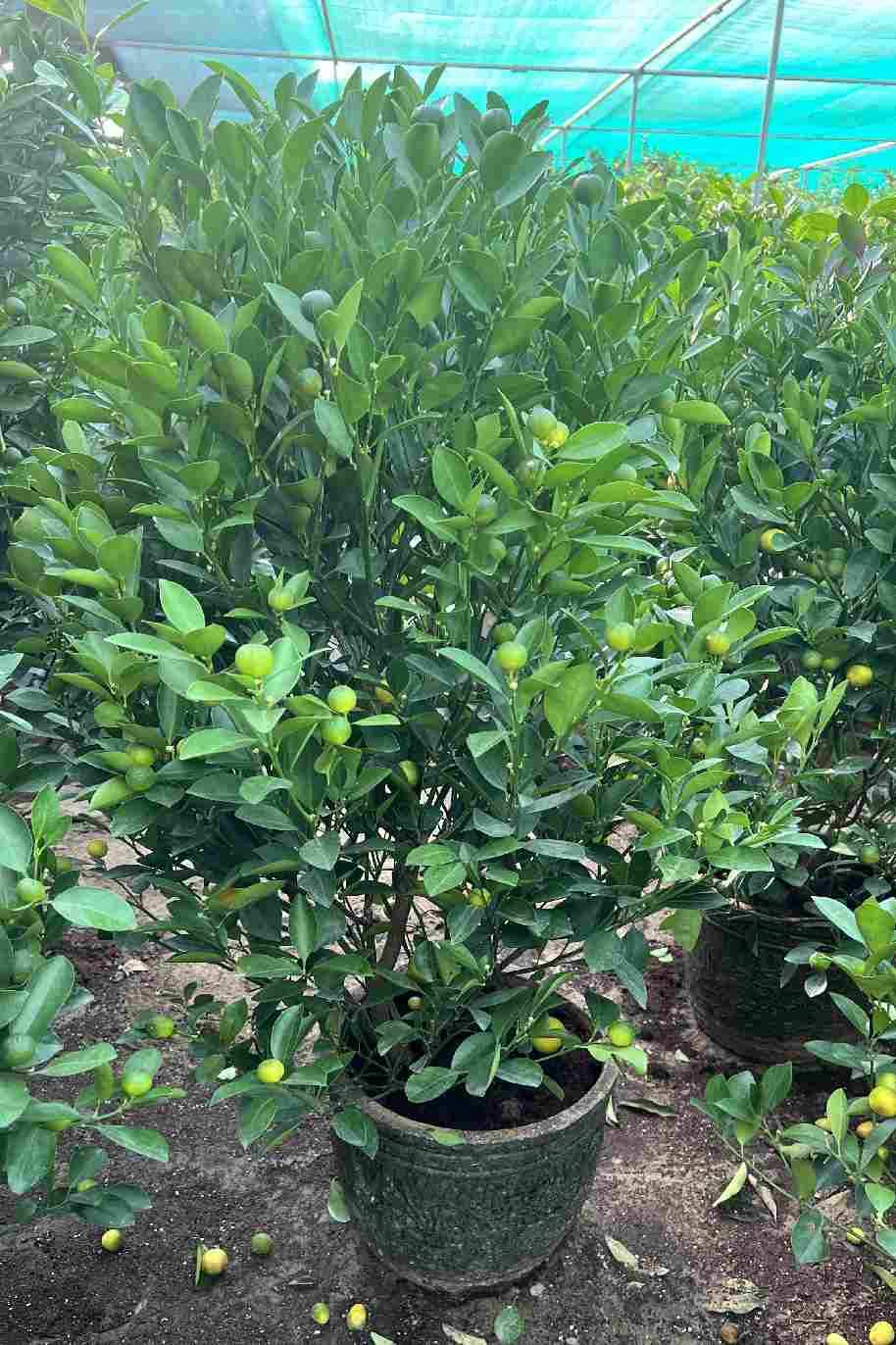Plant Bio
Mandarin Tree Care
Caring for mandarin oranges is easy, but requires some attention in order to grow plenty of sweet-tasting fruit. Follow the tips below to guarantee a tasty harvest year after year.
Sun and Temperature
Mandarins can be grown in full or partial sun meaning it needs at least 6 hours of direct sun each day. They are hardy to USDA zones 8-11. They prefer hot summers and mild winters. Ideally, temperatures ranging from 40-90°F. However, they can tolerate temperatures down to 20°F for a short period and temperatures well above 100°F.
If there is fruit on the mandarin tree, freezing temperatures freeze and damage the fruit. The tree itself can tolerate lower temperatures before damage or death. Trees can be protected from frost by bringing indoors or by covering with frost fabric.
Sunburn is common on excessively hot days especially on tender growth, but the damage is minimal and the trees will eventually grow out of it. Sunburn can be prevented by covering trees with a light shade-cloth or by covering the tree in a whitewash.
Water and Humidity
Water citrus early in the morning once a week. Soil should be kept moist, but not soggy or saturated. Use soaker hoses or drip irrigation to avoid wetting the trunk of the tree.
Trees planted in a pot may need to be watered more often. They should be fully saturated and allowed to dry down until slightly moist before the next watering. Potted trees can be watered using drip irrigation or manually with a hose. If watering manually, avoid wetting the trunk.
Trees should be well watered during fruit development. Once the fruit reaches full size or around full size, water less frequently to build up the sugars in the fruit. Trees do not need extra water during the rainy season.
Soil
Mandarin trees tolerate a wide range of soil types but require good drainage. Trees benefit from the soil with high organic matter. Mandarins tolerate a wide pH range but thrive in a pH range between 5.5-6.2.
If planting in an area with poor drainage or poor quality soil, plant the orange tree in a raised bed and amend the soil with organic matter.
Fertilizing
There are a lot of different fertilizers available at garden centers specifically formulated for citrus. The rates and application frequency depend on the fertilizer blend and whether or not it is a slow-release blend. Slow-release blends typically need to be applied once or twice a year.
Mandarins should be well fed between March-August when trees are most actively growing. If a citrus fertilizer mix is not available, 12-6-6 can be used. Look for fertilizer blends that also incorporate micronutrients such as magnesium, zinc, iron, and copper.
Pruning
Prune your mandarin tree between February and April preferably before bloom. Mandarins are not deciduous, so trees will maintain their leaves throughout the entire year. Prune to remove dead or damaged branches, to maintain size, remove suckers, and open up the tree’s canopy.
Suckers are shoots that grow from the rootstock. These shoots will look very different from the mandarin variety and should always be removed. These shoots will not produce good fruit. Remove suckers by cutting them flush with the main trunk.
To open up the canopy, remove any overlapping limbs or limbs that have a narrow-angle on the main trunk. When removing deadwood or diseased branches, prune back several inches below the dead or diseased branch to ensure the entire infection or dead portion is removed. Old or damaged fruit should also be manually removed. While it should fall off naturally, removing the old fruit will prevent diseases and preserve resources for shoot growth and flowering.
Mandarins do not require older growth to produce fruit. Flower buds are very noticeable on trees. Pruning off flower buds will reduce the amount of fruit for the season.









